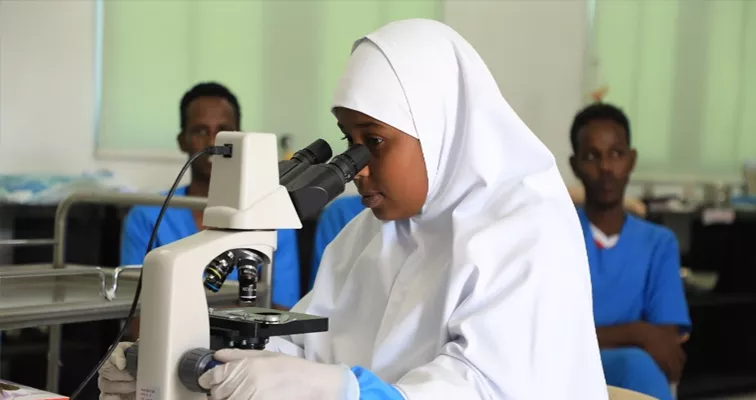A modernized skills lab for future healthcare professionals in Somalia

Somalia has one of the highest maternal and infant mortality rates in the world. Each year, thousands of women and children die from preventable illnesses and medical complications due to limited access to essential healthcare services. A significant barrier is the severe shortage of skilled healthcare workers.
Somalia only has four healthcare workers (doctor, nurse, or midwife) for every 10,000 people – the world’s lowest patient-to-healthcare worker ratio.
In 2002, the SOS Community Nursing College in Mogadishu, now named the SOS College of Health Sciences, was established to address this critical gap. For over 20 years, the college has been training and certifying nurses, midwives, community health workers and nutritionists.
The college is recognized as a centre of excellence in training and developing skilled healthcare workers in Somalia.
SOS Children’s Villages Somalia recognized the need to upgrade the college’s facilities to support the growing number of students and align with modern teaching methods.
A comprehensive learning environment

The SOS College of Health Sciences skills laboratory provides a dynamic learning environment where students engage in practical learning activities such as case studies, group discussions, and role-playing. Developing clinical skills ensures they graduate with high levels of competency, readiness and confidence for real-world medical challenges.
Expanding and modernizing the learning space
A significant milestone in 2024 was the expansion and modernization of the skills lab. The project involved significant renovations, including removing an external wall and upgrading the plumbing and electrical systems. A bigger space accommodates more students and fosters a learning-friendly environment.
New equipment for advanced medical training

The modernization efforts included acquiring state-of-the-art medical tools and teaching aids. These upgrades replaced outdated materials and introduced equipment aligned with the latest advancements in medical education and technology.
Some of the new medical materials and tools include:
Diagnostic tools: stethoscopes, ultrasound machines, blood pressure cuffs, e-charts
Clinical equipment: examination beds, oxygen machines, trays, trolleys
Basic instruments and supplies: forceps, galipots, syringes and needles, umbilical cord scissors or clamps, disposable gloves
- Teaching aids: patient simulators, CPR and AED training manikins, teaching microscope, visual aids, anatomical models
These upgrades have enabled high-fidelity healthcare simulations, allowing students to practice their decision-making and clinical skills in lifelike scenarios.
Access to better healthcare education
With modernized facilities, students report greater confidence in their abilities and improved preparedness for professional practice. The new space and equipment have increased student participation and performance, benefiting over 110 students annually.
The SOS College of Health Sciences is ensuring that future healthcare professionals are equipped with the knowledge, skills, and confidence needed to make a lasting impact in their communities.
We thank the Ptarmigan Charitable Foundation for generously supporting this project.
